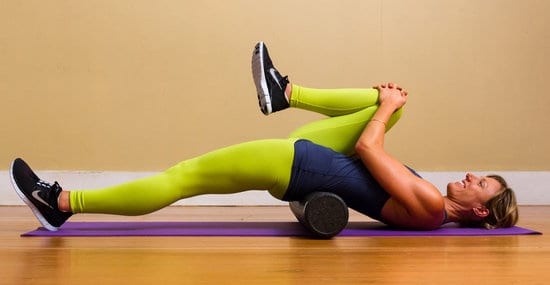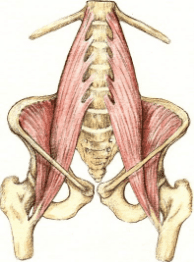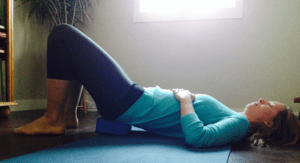Your psoas (pronounced so-az) is a fascinating muscle. In fact there are two of them! One emerging from each side of your lumbar spine and running down the front of your pelvis, over the ball and socket hip joints and connects into the lesser trochanter of the femur bones. It is a deeply embedded muscle, one that is hard to tangibly feel and sense. Which is maybe why there is such an air of mystery about it.
The psoas does so much for us as it is the only muscle that connects your spine to your legs. Not only just a muscle, the lumbar nerve plexus is embedded within the psoas, which means it is intimately tied with the nerves that deal with your pelvic floor, hip rotators, deep groin and inner thighs as well as the autonomic, motor and sensory fibers to your lower extremities.
While the psoas does so much for us, you could even say it does toomuch. How? Well, the short story is that your body adapts to the positions you spend the most time in. Which is great if we are always moving around, walking more than driving, walking in shoes without any heels, sitting in a variety of positions, and then moving some more. But the majority of people sit most of the day and sit in a fairly fixed position at the computer, in the car and on the couch.
What about standing? Because of all that sitting, your psoas will be short and tight. Which means when you stand, the tight psoas will do all sorts of fun things to your pelvis, legs and back. It might thrust the pelvis forward, taking your posterior leg muscles (your butt and hamstrings) out of the equation. Decreases hip range of motion and mobility and puts strain on your low back just to name a few.
When we don’t properly stack our bones and align the skeleton, we end up using muscles to hold us up. And one muscle that ends up doing most of the holding is your psoas. Now that might not sound so bad at first but keep in mind your muscles aren’t designed to hold you up, your bones are.
When you use your psoas to do most of the heavy lifting of holding your skeleton up, it overworks a muscle that is there to respond, not to hold. This creates muscular fatigue, lack of blood and oxygen flow to many regions of your body. This affects your digestion, immune system and pelvic floor. And we haven’t even addressed the more emotional side of the psoas, how it is tied into your stress, past trauma and fears! But we can save that for another post.
Now I don’t want to get all doom and gloom here. I want us all to have a happy, supple and relaxed psoas. Now that you have a clearer picture of some of the lifestyle and postural factors that can contribute to a tight psoas, bringing attention throughout the day and the activities you are doing (including your yoga practice) can go a long a long way into putting some love back into your new friend, your psoas.
While there are a whole bunch of things we can do to support and release the psoas, here are three things you can do everyday.
Psoas Releases
Psoas Release on Block
Place block (or bolster) underneath your pelvis. You want to have the block fairly low down, toward your tailbone to allow your pubic bone to lengthen toward the ceiling.
This tilt will allow your low back and ribcage to move towards the ground. Start to feel the back of your ribcage soften down and the belly relax completely. If you have the habit of thrusting your ribs, then you can place your hands on the front of your ribcage to remind yourself to relax toward the floor. Stay for 5-10 mins.
Psoas Release with Bolster Under Shoulders
Can you spot the kid in the picture?
Place one edge of your bolster between your shoulder blades. The rest of your spine and ribcage will be off of the bolster and relaxing towards the ground. If your psoas is really tight, the front of your ribcage will be lifted and most of your back will be off the floor. Over time, the psoas will relax enough that most of the back softens down and connects more on the floor. This isn’t something that you can force, you just have to hang out and allow your psoas and muscles to relax. Stay 5-10 mins or as long as it feels comfortable. You can also place a blanket over your body for more warmth and grounding.
Stack your bones, not your psoas
One very simple cue that you can remind yourself of all day long while you are standing, is to back your hips over your heels. Most of us have the habit of thrusting our hips forward which places strain on your back, knees and feet. Just by backing your pelvis so it is lined right over your heels, your bones get to do the weight bearing that they are designed to do and your psoas doesn’t have to hold you up.
Try this:
Stand with your feet pelvis width apart and parallel to each other. Shift your hips forward and notice where you feel the weight of your body being held in your foot. Most likely at the middle and front of your foot, including your toes.
Pelvis forward = sad body
Now check out my totally scientific, and totally straight line on the picture on the left. While not not perfect, it illustrates where my pelvis is hanging out in space. When my hips are thrust forward, I’ve lost the stability of my bones while putting pressure on my joints and muscles. With the hips thrust forward, notice how then my ribs are thrust forwards as well. And if you look closely, you will see my butt is even clenched. All fun results of poor alignment!
The picture on the right, I backed my hips over my heels and I’ve left you to imagine the straight line down from my hips to my heels. Yay, happy psoas!
If you are looking to learn more about your fascinating psoas, and live in Edmonton, Calgary or Canmore areas, you can sign up for my interactive and experiential upcoming psoas workshops. Click here for more info.
Brea Johnson has been a yoga teacher and movement educator for over 11 years. With a love for learning and the human body, she has studied extensively in yoga, anatomy and biomechanics. She is also a certified Restorative Exercise SpecialistTM. As a yoga teacher and mentor, Brea leads numerous retreats and workshops in Canada and the US and is known for her warm and engaging teaching style with a down to earth and accessible approach to yoga. www.heartandbonesyoga.com

















